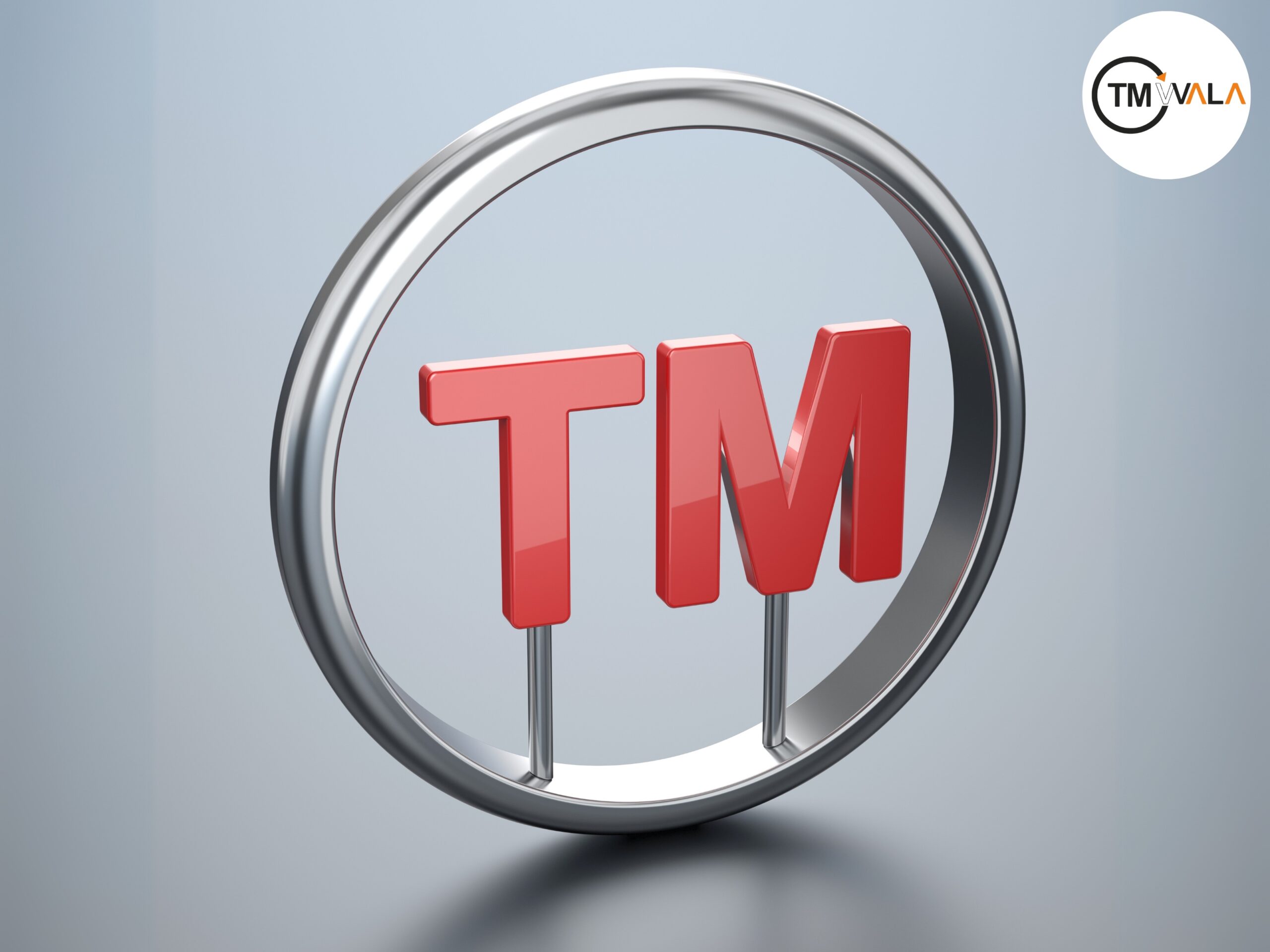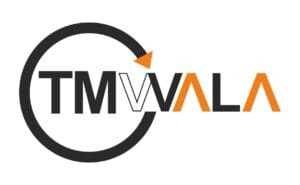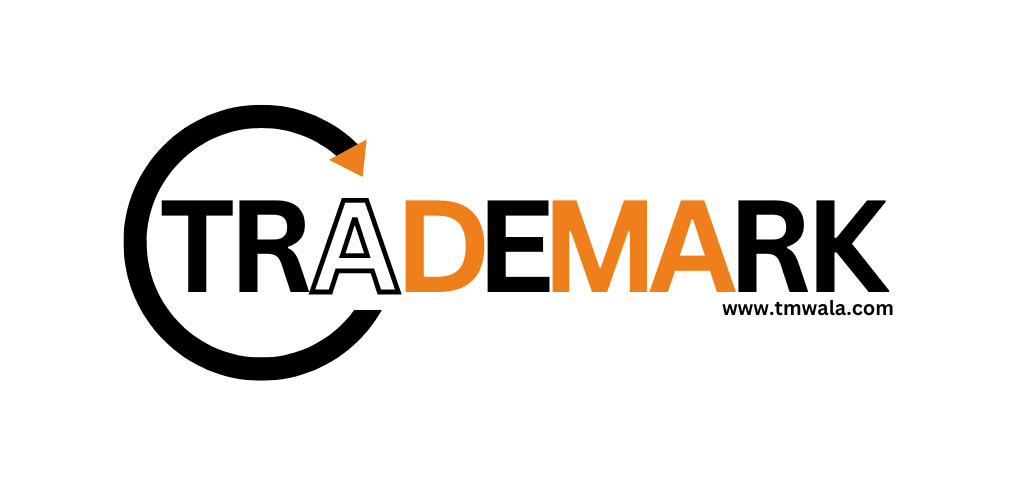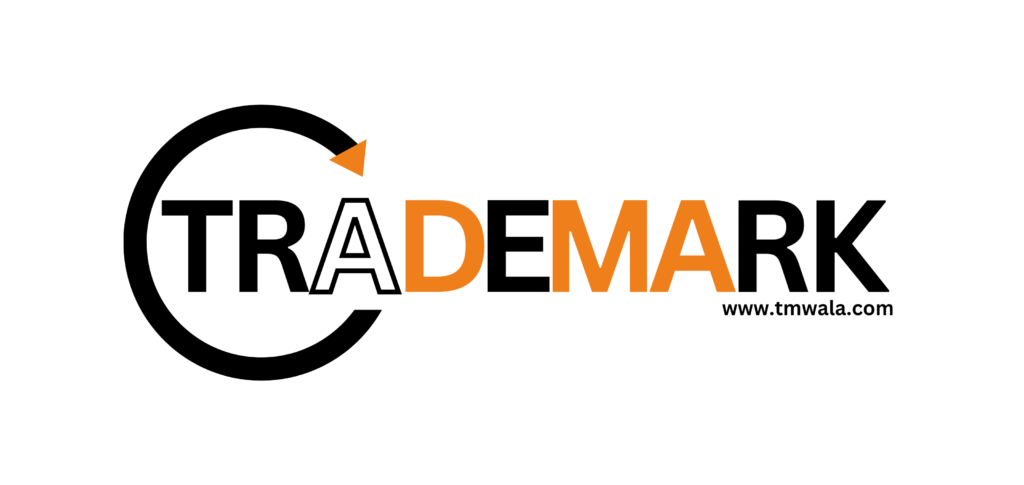
Thinking of applying for trademark registration? Read this article first to understand the common trademark registration mistakes done by people and how to avoid them.
If you’re venturing into the world of trademark registration for the first time, chances are you’ve heard of trademark classes. Sounds straightforward enough, right? Not always! Misunderstanding trademark classes is one of the most common and easily avoidable mistakes businesses make during the registration process. Getting this wrong can delay your application or, worse, lead to rejection. And nobody wants to waste time or money on that! So, let’s break it down and make it easy to understand what trademark classes really are and why getting them right is so important.
Trademark classes are basically categories for the goods or services your business provides. There are 45 different classes, with 34 for products and 11 for services. These classes help clarify which sector your trademark applies to and ensure that your business is protected in the correct industry. For example, if you own a bakery and want to trademark your brand, you’d need to choose a class related to food products. Meanwhile, a software company would pick a different class more suitable to their services.
Here’s where it can get tricky, though. It’s not just a one-size-fits-all approach. Let’s say you run a business that sells baked goods but also offers catering services. You might think you only need to file in one class, but to cover all aspects of your business, you’d need to file under both a goods class for the baked products and a service class for catering. Many businesses make the mistake of thinking one trademark class is enough when in fact, they may need multiple to fully protect their brand.
Filing your trademark under the wrong class is like putting your luggage on the wrong flight—it might never end up where it needs to be! If you file in the wrong class, your trademark won’t be protected in the industry you’re actually working in. Imagine thinking your bakery’s brand is protected, but someone in your town opens a shop with a very similar name and logo, simply because you didn’t include the right class for baked goods. That’s a headache waiting to happen, and worse, it could cost you legal fees to sort out.
If you fail to choose the appropriate trademark classes for all of your business activities, you might end up vulnerable to infringement claims. Someone else could swoop in and file a trademark in the class you missed, potentially forcing you to rebrand or face legal action. Yikes! In addition to that, reapplying for a trademark after making a mistake can be costly in both time and money, so it’s always better to be thorough from the beginning.
Filing under multiple trademark classes might seem like extra work, but it’s one of the smartest ways to fully protect your brand. Let’s say your business expands in the future and you begin offering new products or services. If your trademark only covers your original class, you’ll have to reapply to protect your new offerings. On the other hand, if you anticipated this growth and filed under several relevant classes, your brand would already be protected. No need for additional filings or fees down the road!
For example, if you’re a clothing brand that decides to start a line of accessories down the line, you’d be covered if you filed in both classes. It’s all about thinking ahead and ensuring that you’ve safeguarded your brand for future opportunities. It’s better to overestimate your needs in this area than to get caught unprepared later.
The best way to avoid misunderstanding trademark classes is to thoroughly research or consult a legal professional. Let’s face it—nobody likes filling out legal paperwork, and trademark registration can be complex. But taking the time to understand the classes your business operates in can save you a lot of headaches later on. There’s nothing worse than going through the whole registration process only to find out you’re not even covered in the right category.
When in doubt, consulting a trademark attorney or professional can be a game-changer. They know the ins and outs of each class and can help you determine exactly where your business falls. Think of it like having a GPS for your trademark journey—navigating without one might get you where you need to go eventually, but you’re a lot more likely to take a wrong turn!
When you’re excited about launching your business, it’s easy to think filing a trademark is as simple as picking a name, filling out some paperwork, and then sitting back as the magic of trademark protection unfolds. But there’s one very important step that far too many businesses skip: doing a comprehensive trademark search. Filing without a comprehensive search is one of the biggest mistakes you can make in the trademark registration process, and it can cost you dearly. But don’t worry, we’re here to help you understand why this step is so crucial!
Let’s face it, coming up with a name or logo for your business can be a long and creative process, but just because you’ve fallen in love with it doesn’t mean it’s available. One of the biggest reasons for trademark rejections is existing, similar trademarks. That’s where a comprehensive search comes in. A comprehensive trademark search helps ensure that no one else is using a name, logo, or tagline that’s too similar to yours.
It’s tempting to skip this step, especially if you’ve done a quick search online and didn’t see anything obvious. But here’s the catch: trademark databases are massive, and a quick Google search isn’t enough to give you the full picture. Just because you didn’t spot anything on the first page of results doesn’t mean someone else hasn’t already filed for a trademark that’s eerily close to yours. Missing this step can lead to big problems later on.
Filing for a trademark without a comprehensive search is like walking through a minefield blindfolded—you might make it across safely, but the chances of stepping on something dangerous are pretty high! If you file without checking whether your desired trademark is already taken, you could find yourself in a situation where your application is denied. Or worse, you could receive a legal notice from an existing trademark holder asking you to stop using your name or logo altogether.
Even if you manage to sneak past the initial rejection stage, there’s a chance someone with a similar trademark will challenge your application. This can lead to costly legal battles, delays, and even having to abandon the trademark altogether. Plus, if you’ve already invested in branding materials like signs, websites, and marketing campaigns, being forced to rebrand can be a major financial setback.
One of the biggest reasons for a trademark application being rejected or opposed is the “likelihood of confusion.” This means that if your trademark is similar enough to an existing one that customers might get confused between the two, your application could be rejected. And it’s not just about the exact name—similar sound, look, or meaning can be enough to get your application denied.
Think of it like this: if there’s already a coffee shop chain called “Starbeans,” and you try to file a trademark for “Starrbeans,” it’s very likely that a trademark examiner will see the potential for confusion. Even though the names are technically different, they’re close enough that customers might think they’re related, which can lead to rejection or even legal challenges. Doing a comprehensive search before filing helps you avoid these kinds of costly and frustrating issues.
Sure, you could try to do the search on your own, but it’s a bit like diagnosing your own car engine problems when you’re not a mechanic—you might be able to figure it out, but you’re more likely to miss something important. A professional trademark search is thorough and covers not just registered trademarks, but also pending applications and unregistered marks that could still pose a legal threat.
When you hire a professional or use a reliable trademark search tool, they’ll look at everything from federal registrations to state-level trademarks, even common law trademarks (which are marks that aren’t officially registered but are still protected because they’re being actively used). They’ll also help you assess potential risks and let you know how likely your trademark is to be approved.
By investing in a professional search upfront, you save yourself from the heartbreak of a rejected application, costly re-branding, and the time wasted going back to square one.
So what’s the worst that can happen if you decide to skip the comprehensive search? Well, besides having your application denied, you could end up in a trademark infringement battle. Infringing on someone else trademark, even accidentally, can lead to fines, lawsuits, and being forced to stop using your brand name altogether. Imagine having to change your company’s name after you’ve already launched your website, business cards, and social media presence! Not fun, right?
Skipping the search might save you a bit of time and money in the short term, but it opens the door to much bigger problems down the line. The legal process is expensive, and courts tend to side with the original trademark holder, not the one who failed to do their homework. Simply put, filing without a comprehensive search is a risk you really don’t want to take.
Starting a new business is exciting, and there’s always that moment when you want to dive right into branding. You’ve got the perfect name, the logo is looking slick, and you’re ready to take on the world. But wait! Before you file that trademark application, there’s one crucial step that too many people overlook: hiring a trademark attorney. Not hiring a trademark attorney early enough can lead to some pretty serious headaches down the line, and in this post, we’ll dive into why you really don’t want to skip this step.
You might be tempted to skip hiring an attorney to save a little cash. After all, how hard can it be to fill out a few forms? Well, it turns out trademark law is a lot more complex than it seems. While the forms themselves might not look intimidating, there’s a lot of legal language involved that can easily trip up someone who isn’t familiar with the process.
For instance, understanding the specific classes your trademark should be filed under can be tricky. One wrong move here could lead to your application being rejected or your trademark not protecting you where it counts. A trademark attorney knows how to navigate these details and ensure that your application is rock solid from the start.
Think of it like this: you wouldn’t perform your own dental work just because you watched a few YouTube videos, right? The same principle applies to trademark applications. It’s easy to think you’ve got it all figured out, but one small mistake can lead to major issues. Hiring a trademark attorney early enough ensures you avoid these rookie mistakes.
One of the most common reasons businesses run into trademark issues is because they waited too long to hire an attorney. By the time they realize they need professional help, they’ve already made costly mistakes. The problem with not hiring a trademark attorney early enough is that once you’ve filed the application, it can be tough (and expensive) to undo any errors.
Let’s say you file your application on your own and get an office action, which is a formal notice from the U.S. Patent and Trademark Office (USPTO) pointing out problems with your application. These can range from minor issues, like needing clarification on your goods or services, to major ones, like your trademark being too similar to an existing one. Handling these office actions is where an attorney really earns their keep. Without legal expertise, you might end up with a rejection, even if the problem could have been easily fixed by a professional.
Hiring a trademark attorney early enough ensures they catch potential problems before you even file, which saves you time, money, and frustration in the long run.
A trademark attorney does more than just help you fill out forms. They act as a guide through the entire trademark process. From conducting a comprehensive trademark search to analyzing the legal strength of your brand name, an attorney can provide valuable insights that you might not even consider. For example, they can identify whether your desired trademark is too descriptive, likely to be rejected, or too similar to existing marks.
Another benefit of hiring an attorney early is that they can help you avoid infringement issues. Imagine spending months developing a brand only to find out that someone else already holds the trademark for a very similar name or logo. Worse, they could take legal action against you, forcing you to rebrand completely. A trademark attorney will spot these issues early and help you pivot to a stronger, safer option.
By having a professional in your corner from the beginning, you avoid falling into common trademark traps, ensuring your brand is protected from all angles. It’s like having a seat-belt while driving—it’s better to have one from the start than to realize too late that you needed it!
It’s easy to look at the cost of hiring an attorney and think, “I can do this myself for way cheaper.” But what you might not realize is that not hiring a trademark attorney early enough can end up costing you more in the long run. Filing a trademark application that gets rejected means you’ll likely need to reapply, which costs additional time and fees. And if you end up in a legal dispute with another company over a conflicting trademark, those legal costs can skyrocket.
When you weigh the initial investment of hiring an attorney against the potential costs of mistakes, delays, and disputes, it becomes clear that hiring a professional is actually a cost-saving measure. It’s an investment in your business’s future. Plus, you’ll have peace of mind knowing your trademark is legally protected from day one.
Navigating the world of trademark law can feel like learning a new language. You’ve likely heard terms like “distinctiveness,” “secondary meaning,” or “likelihood of confusion” thrown around. Today, we’re going to focus on one that often trips up businesses: the “likelihood of confusion” standard. Misinterpreting the “likelihood of confusion” standard is a common mistake that can result in a denied trademark application or, worse, a legal battle. But don’t worry! We’re here to break it down in simple terms, so you know exactly what to watch out for.
When you file for a trademark, one of the main things the U.S. Patent and Trademark Office (USPTO) checks for is whether your trademark could be confused with an existing one. That’s what the “likelihood of confusion” standard is all about. It’s a legal test to determine whether your trademark is too similar to an already registered one, to the point where customers might mistake the two businesses for each other.
Here’s the tricky part: it doesn’t matter if you think your trademark is different enough. If there’s even a small chance that customers could confuse your business with another, your application could be denied. And it’s not just about identical names—sound, appearance, and meaning all come into play. So, two trademarks don’t have to be exactly the same for there to be a problem. Even small differences might not be enough to avoid confusion.
One of the easiest ways to misinterpret the “likelihood of confusion” standard is to assume that a trademark is safe as long as it isn’t spelled exactly the same. However, this is where many business owners go wrong. Even if your name is spelled differently, it can still be rejected if it sounds similar to another brand. Imagine trying to trademark “Kwik Kleaners” when there’s already a “Quick Cleaners” in the same market. Even though the spellings are different, they sound almost identical. In the eyes of the USPTO, that’s likely to confuse customers.
Sound-alike names are a major reason why many applications get denied or challenged. So, when you’re brainstorming a brand name, don’t just think about how it looks. Say it out loud, and consider whether it’s too close to something that’s already out there.
Another common misstep is thinking that the “likelihood of confusion” standard only applies to the name itself. But trademark law goes beyond just names. Logos, slogans, and even product categories can also cause confusion. If your logo looks too much like another brand’s, even if the names are completely different, the USPTO could still reject your application. The same goes for slogans that share a similar message or vibe.
And let’s not forget about the actual products or services you offer. Two businesses could have similar names, but if they operate in completely different industries, there’s less risk of confusion. For example, if one business sells garden tools and the other sells software, the USPTO might not see a problem. But if the businesses are in the same market—let’s say they’re both coffee shops—then there’s a higher chance of confusion, even if the names have small differences.
So, when you’re considering your trademark, make sure you think about all the elements that contribute to your brand’s identity, not just the name. It’s a holistic process that the USPTO looks at to determine if there’s a “likelihood of confusion.”
Misinterpreting the “likelihood of confusion” standard can have serious consequences. The most immediate one is that your trademark application could be rejected, which means going back to square one. But it doesn’t stop there. If you start using a trademark that’s too similar to another brand’s, you could be setting yourself up for a trademark infringement lawsuit. The original trademark holder could come after you, demanding that you stop using your name, logo, or slogan—and you might even be on the hook for damages.
Even if you don’t face a lawsuit, you could still end up having to rebrand. Imagine putting all that time and money into building your brand, only to realize it’s too close to another business’s trademark. Suddenly, you’re forced to change your name, redo your logo, and update all your marketing materials. It’s not just expensive—it’s frustrating, and it can hurt your business’s reputation.
That’s why it’s so important to get it right from the start. Taking the time to properly understand the “likelihood of confusion” standard can save you from these costly mistakes.
How to Avoid Misinterpreting the “Likelihood of Confusion”
So, how do you avoid misinterpreting this tricky standard? First, do your homework. Conduct a comprehensive trademark search before you file your application. This means looking not just for identical trademarks but also for similar ones that could pose a risk. You can do some of this research on your own, but for the most thorough results, consider hiring a trademark attorney who knows the ins and outs of trademark law.
Another key step is to think broadly about your brand. Don’t focus solely on the name—consider how your logo, slogan, and products might be perceived in comparison to existing trademarks. And always remember that just because something looks different doesn’t mean it won’t cause confusion.
Lastly, keep in mind that customers don’t know trademark law like you do. They’re not comparing every detail—they’re just looking for something that’s familiar. If your brand looks or sounds too much like another one, they could easily get confused. The USPTO takes this into account when reviewing trademark applications, so it’s important that you do, too.
Registering a trademark is a critical step in building and protecting your brand, but it’s easy to make costly mistakes if you’re not careful. By avoiding common pitfalls, like misunderstanding trademark classes, skipping comprehensive searches, filing without proper legal help, or misinterpreting the “likelihood of confusion” standard, you can save yourself from unnecessary headaches down the road.
The key to a successful trademark registration is thorough preparation and attention to detail. Take the time to research, hire the right professionals when needed, and make sure your trademark is distinctive and free from potential conflicts. Avoid rushing the process—instead, think of trademark registration as a smart investment in your brand’s future. By carefully navigating the legal landscape, you can safeguard your business, avoid legal disputes, and build a strong foundation for long-term success.
Conduct Trademark Search on: https://tmrsearch.ipindia.gov.in/tmrpublicsearch/
Read more about Trademark Search: https://tmwala.com/trademark-search/
Get started instantly

TMWala
Your one stop shop for all your business registration and compliance needs.
Choose your Entity Type
Individual/ MSME/ Sole Proprietorships
Non-MSME/ Large Entities

₹1,500.00 Original price was: ₹1,500.00.₹999.00Current price is: ₹999.00.
Trademark Application @ ₹999* (Basic Discounted Plan for MSME/Individual/Sole Proprietorships) Best-Selling, Economical & Easy

₹1,500.00 Original price was: ₹1,500.00.₹999.00Current price is: ₹999.00.
Trademark Application @ ₹999* (Basic Discounted Plan for Non-MSMEs/Large Entities) Best-Selling, Economical, Quick and Easy
Choose your Entity Type
Individual/ MSME/ Sole Proprietorships
Non-MSME/ Large Entities
₹3,500.00 Original price was: ₹3,500.00.₹1,999.00Current price is: ₹1,999.00.
Government Fees
₹4500/-
₹3,500.00 Original price was: ₹3,500.00.₹1,999.00Current price is: ₹1,999.00.
Government Fees
₹9000/-
Choose your Entity Type
Non-MSME/ Large Entitie
Individual/ MSME/ Sole Proprietorships

₹9,000.00 Original price was: ₹9,000.00.₹3,999.00Current price is: ₹3,999.00.
Trademark Application @ ₹3999* (Premium Discounted Plan for Non-MSMEs/Large Entities) Comprehensive
Government Fees
₹9000/-

₹9,000.00 Original price was: ₹9,000.00.₹3,999.00Current price is: ₹3,999.00.
Trademark Application @ ₹3999* (Premium Discounted Plan for MSME/Individual/Sole Proprietorships) Comprehensive
Government Fees
₹4500/-